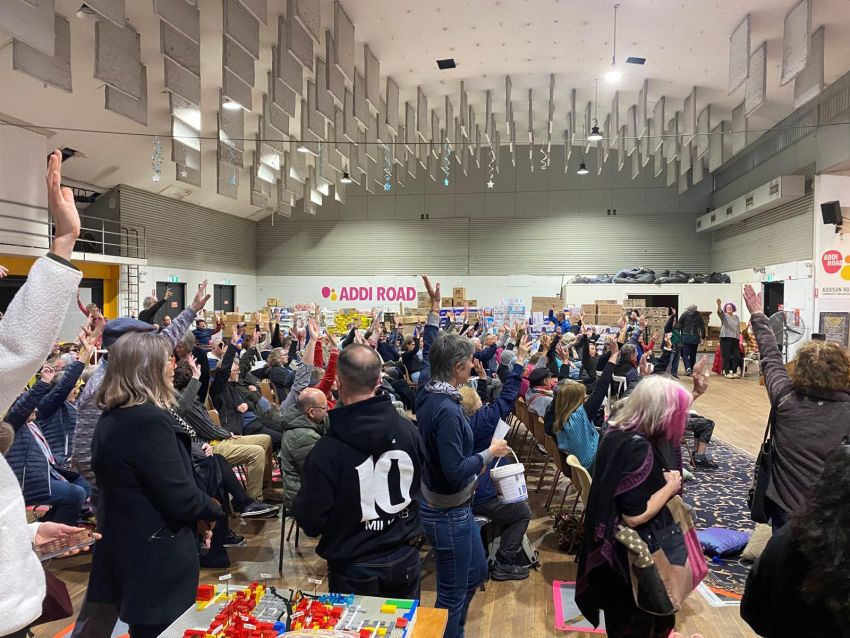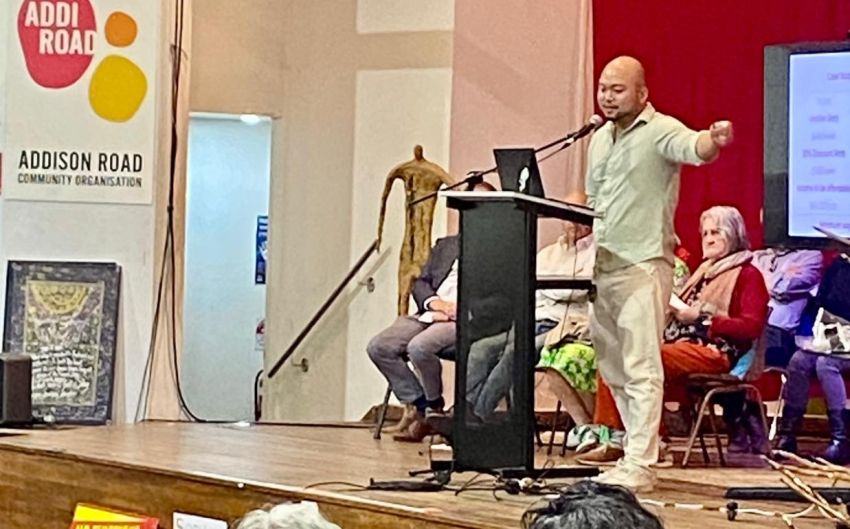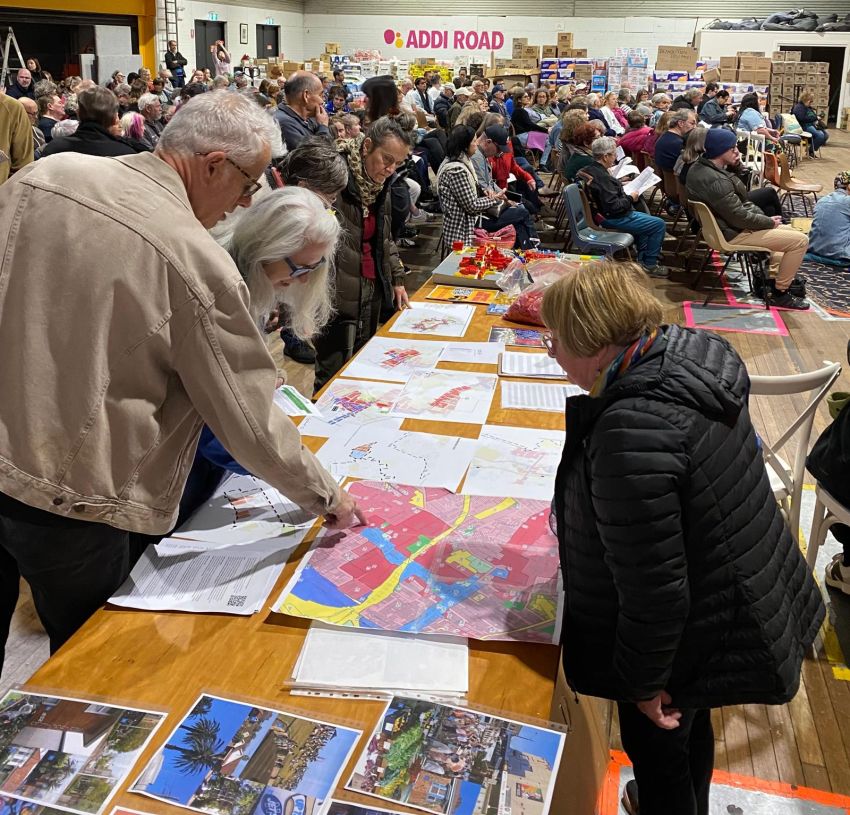
Hundreds of residents rallied in Marrickville, on Gadigal Country/Sydney, on July 27 to protest the pro-developer planning proposals being floated by the Labor-controlled Inner West Council (IWC).
The meeting was organised by the Better Future Coalition, a coalition of local community groups. It decided to call a public meeting because of IWC’s failure to adequately inform the community about the content of the plan and its huge implications.
The council plan — grandly misnamed “Fairer Future” — aims for 31,000 new apartments over the next 15 years. Only 2% of these are to be “affordable housing”.
“Let’s be clear that the definition of ‘affordable’, 80% of market rent, is not affordable for most people,” said Rachel Evans, from Action for Public Housing. “The only truly affordable housing is public housing.”
In response to the demand from the organisers that at least 15% of new dwellings be “affordable housing”, Evans proposed to loud applause that this be public housing.
Bonuses for developers
Evans was part of a panel of speakers who addressed a variety of aspects of the IWC plan. While council calls its plan “the Fairer Future Plan”, it has been widely renamed the “unFairer Future Plan” because of its pro-developer slant. It would increase the number of dwellings in the target suburbs of Marrickville, Dulwich Hill, Ashfield and Leichhardt by 60–70%.
It also doubles the number of dwellings and the allowable heights originally proposed by the Chris Minns Labor government under its Transport Oriented Development (TOD) initiative. The TOD plan capped development at six storeys; the average in the new plan is closer to 12 storeys.
The plan is also replete with “bonuses” for developers, so that a four-storey development can end up at 10 storeys, or a 10-storey one can blow out to 17.
These bonuses are in the plan’s fine print, which has 1150 pages of supporting documents. The sheer challenge of digesting this documentation, in addition to IWC’s poor communication strategy, lay behind the meeting’s demand that the council defer its vote on the plan, scheduled for August 19.
Minuscule green space
“The council’s plan is loaded with incentives for developers,” said former independent IWC councillor John Stamolis, “but offers little in terms of new amenity, services and open space for the huge increase in population”.
The promised open space adds up to 0.33 square metres for each new resident, compared to the current average of 13 square metres.
The Inner West already ranks as having the second-lowest ratio of open space for each person among the state’s 125 council areas.
Leichhardt resident Peter Gillard told the meeting that the home ground of his daughter’s team, part of the Balmain District Football Club, is in Riverwood — 25 kilometres away. “We already don’t have enough playing fields, so how are we going to provide for all these new residents who live in apartments and don’t even have backyards?”
Is more supply the answer?
Local architect Eddie Ma tackled head-on the argument that more supply was the answer to the housing affordability crisis.
In a series of slides, Ma compared the median rents of a two-bedroom apartment in a new high-rise development in Marrickville to similar developments in Rhodes, Chatswood, Wolli Creek and Burwood. These suburbs were chosen because they are now full of the type of high-rise apartment blocks IWC is proposing for Marrickville.

Ma further calculated what household income would be needed for these rents to be “affordable”, defined as 30% of income. In every case, the income needed was $150,000 or more.
In the straw polls at the end of the meeting, only the handful of members of YIMBY Sydney voted in favour of the proposition that more supply from private developers was the answer to the housing affordability crisis.
The meeting supported more dwellings in the Inner West — but to reduce the scale of the new plan and ensure more genuinely affordable housing.
But as Stamolis pointed out, the Inner West already has the fourth highest dwelling density in the state, and the new housing would be at the expense of older, cheaper stock and existing communities.
“Under Fairer Future, large areas of our neighbourhoods will be erased and demolished,” Stamolis added. “Thousands of households in our community today, owners and renters alike, won’t be part of Fairer Future. As the pace of development picks up, we will see many households forced out of the Inner West.
“We will see many instances where existing affordable dwelling stock, such as older blocks of units are replaced by more expensive apartments. This will displace many households on lower incomes and make prices and rents even more unaffordable.”
To minimise this social and environmental disaster, the meeting overwhelmingly supported a call that IWC defer voting for Fairer Future at the August 19 meeting and commit to more extensive public consultation.
